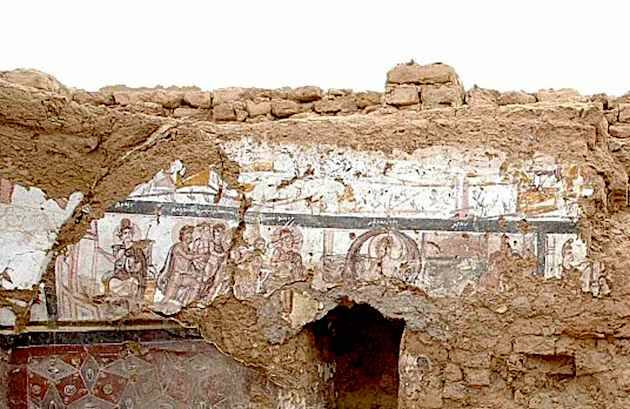Human remains discovered in excavation of fourth century church in Egypt

Archaeologists discovered 17 human remains while excavating an ancient church in Egypt. The church, dated to around the mid-fourth century, was uncovered in an ongoing archaeological excavation of Trimithis (also known as Amheida), an ancient city near the western edge of the Dakhla Oasis in the western desert.
The city once was a settlement during Egypt’s Roman period, which started in 30 B.C. and lasted until the Muslim conquest in A.D. 641. New York University’s Institute for the Study of the Ancient World leads the international research team. Experts have continued studying various buildings, inscriptions and bathhouse facilities.
For Project Director David Ratzan, the church is one of the most exciting discoveries.

Although believers gathered and worshipped before the Roman Emperor Constantine made it illegal to persecute Christians, Ratzan noted that the design of this particular church stands out.
“Churches in this style, based on the Roman basilica, a type of public building dedicated to administration and law, date back only to a generation or two before the church at Trimithis, since only then did Christians feel sufficiently confident to build proudly public spaces of worship,” he said.
While the church had suffered degradation from erosion over the many centuries, “Luckily some of the ceiling of the church, which had collapsed, was preserved on the floor. From this we were able to determine something of the decorative program of the church,” Ratzan told Newsweek in an interview.
Even more surprising to experts than the design was the discovery of 17 bodies buried in the church. Twelve were buried in crypts underneath what would have been the altar and pastophoria, or service rooms. Scientists did not expect to learn that seven of the bodies buried in the crypt were female, and eight were children or adolescents, including infants. It is possible that more women are among the remains, but it is hard to determine a person’s sex from skeletons at a certain age.
“While there is good evidence that women were important in early Christianity, it was still surprising to find such a concentration of women and children buried in this church, since Roman Egypt was a patriarchal society,” Ratzan said.
–Dwight Widaman | Metro Voice






